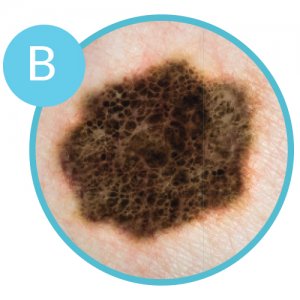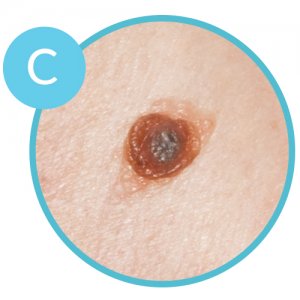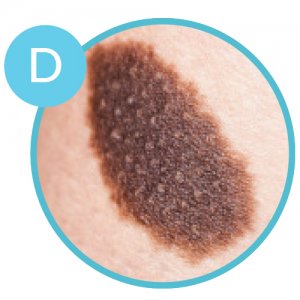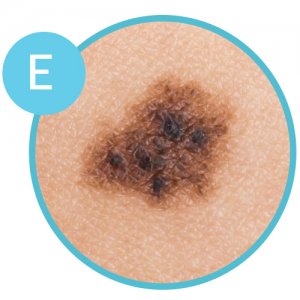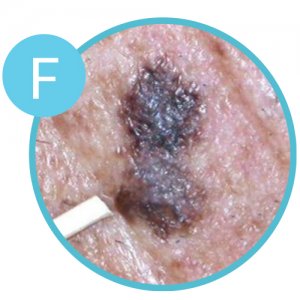Melanoma is the least common form of skin cancer, but it is the most dangerous. And because it is known to spread quickly, identifying melanoma early is critical in getting the best treatment results.
Although your dermatologist may be able to notice a potential melanoma during a routine visit, it is important to be vigilant between appointments to spot any skin changes that could indicate potential cancer. Routine skin self-examinations are as important as regularly checking your breasts for any irregularities, and they’re not difficult to do.
When it comes to melanoma, remembering your ABCDEFs is the key to recognizing potential skin cancer. Regularly evaluate your moles for these changes, and if you notice any of these symptoms, see your dermatologist.
The ABCDEF’s of Melanoma
 A Is for Asymmetry
A Is for Asymmetry
If you draw an imaginary line through the center of a mole, do both sides look the same? If not, the mole is asymmetrical. Asymmetrical moles have a higher likelihood of being malignant, so they need to be evaluated by a dermatologist, who may perform a biopsy to determine if the mole is cancerous.
B Is for Border
Non-cancerous moles have smooth borders, whereas malignant growths have irregular ones. Look for moles that have scalloped edges, notches around the edges and other irregularities that could indicate a melanoma in the early stages of development.
C Is for Color
Typically, moles are a single color throughout. Malignant growths usually have multiple colors or shades, including brown and black. In some cases, melanomas may take on atypical mole colors, including blue and red.
D Is for Diameter
One way your dermatologist will evaluate your moles during a screening is to consider their sizes. Benign moles tend to be smaller than cancerous ones. Any mole that is larger in diameter than a pencil eraser should be considered a potential malignancy. Keep in mind, however, that some melanomas are smaller in size, especially early in their development.
E is for Evolving
Skin changes are always something to discuss with your dermatology doctor. Most benign moles look the same year after year. An evolving appearance could indicate the presence of cancer. Be alert to moles that change in shape, color, or size or that bleed or itch so you can report them to your dermatologist.
F is for Funny Looking
If you step back and look at your skin, and see one spot that just looks funny or doesn’t look like your other spots, it needs to be looked at by a Board-Certified Dermatologist.
Skin cancer has a low mortality rate, but it’s essential to catch any potential melanomas, basal cell carcinomas, or squamous cell carcinomas early. See your dermatologist once a year for a professional skin cancer examination, and use the ABCDEFs to regularly perform self-examinations in between.
Looking to get a Skin Cancer Screening?
We have multiple locations throughout the country, so fill out our simple online form to get in touch with us. One of our local team members will reach out to you shortly to answer your questions or schedule an appointment for you to visit us soon.
Find a location near me
or

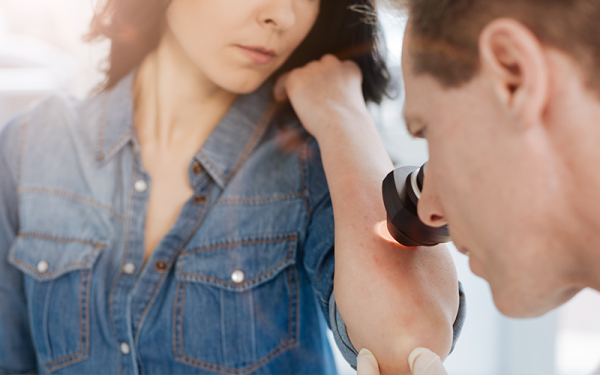
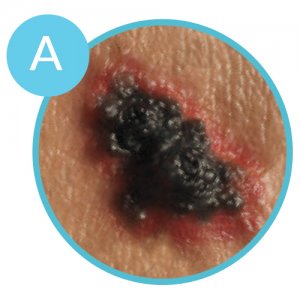 A Is for Asymmetry
A Is for Asymmetry